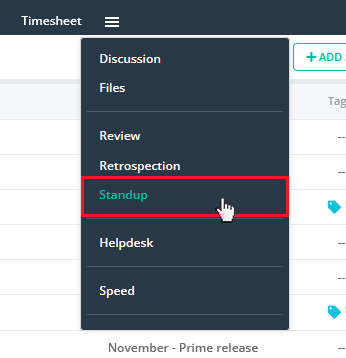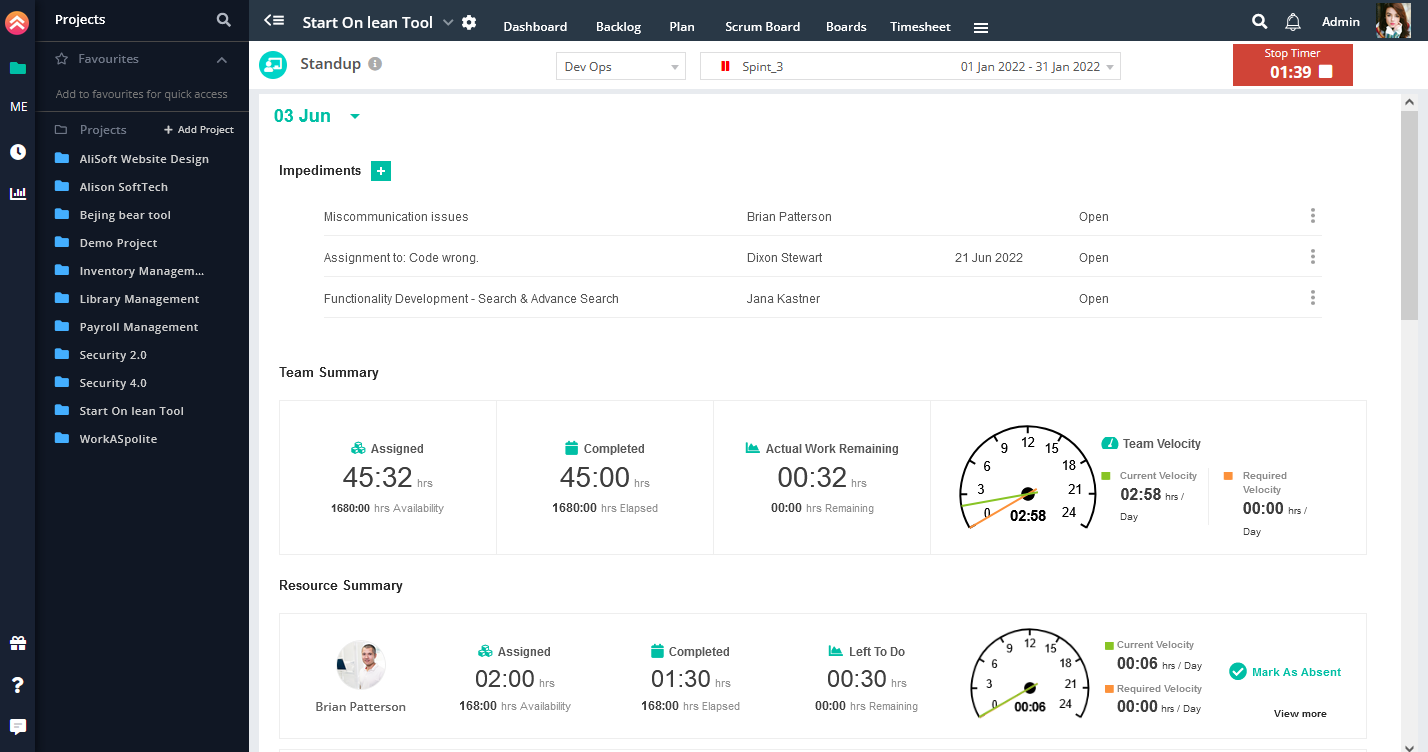List of Standup article
Overview
The Daily Stand up is the key inspect and adapt meeting during a Sprint. It is designed to quickly inform everyone of what’s going on across the team. It’s not a detailed status meeting. It tries to improve communication amongst the team members, identifies and removes impediments to development, highlight and promote quick decision-making, and improves the team’s participation levels. On stand-up you will only view those days that are available in the sprint range.
Stand-up will be performed by team and facilitated by the scrum master. The product owner may also attend the meeting. Learn more here.


